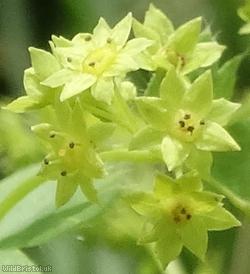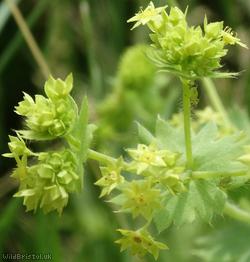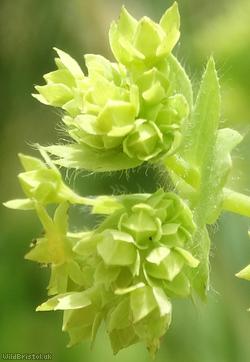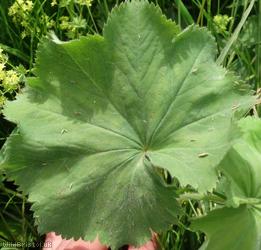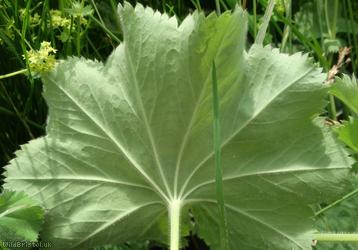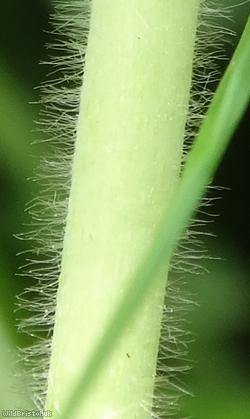Garden Lady's-mantle - Alchemilla mollis
Favourite Photos
Species Description
Common and widespread throughout the UK as a throwout or escapee. Habitat includes: gardens, parks, allotments, churchyards, roadside verges, riverbanks, rubbish tips etc. Growing habit: Perennial. Flowers: May to September. Height Up to 60 cm. Other names include: Soft Lady's-mantle, Lady's-mantle. Cultivated in Britain since 1874 and first recorded in the wild in 1948. Native to South East Europe and South West Asia.
ID:
Stace 4:
A. mollis (Buser) Rothm. - Soft Lady's-mantle
Plant large to very large; leaf-lobes 9-11, rounded, with 15-19 slightly incurved subacute teeth; basal sinus rather wide; whole plant with dense patent hairs except rather sparse on hypanthia and 0 on pedicles; (2n=102-106). Neophyte-naturalised; much grown in gardens and prolifically seeding; commonly more or less naturalised in scattered places throughout British Isles; Native to Carpathians.
key:
- Petioles and lower part of stem with erecto-patent, patent or reflexed hairs
- Epicalix-segments about as long as sepals; hypanthium much shorter than mature achene
